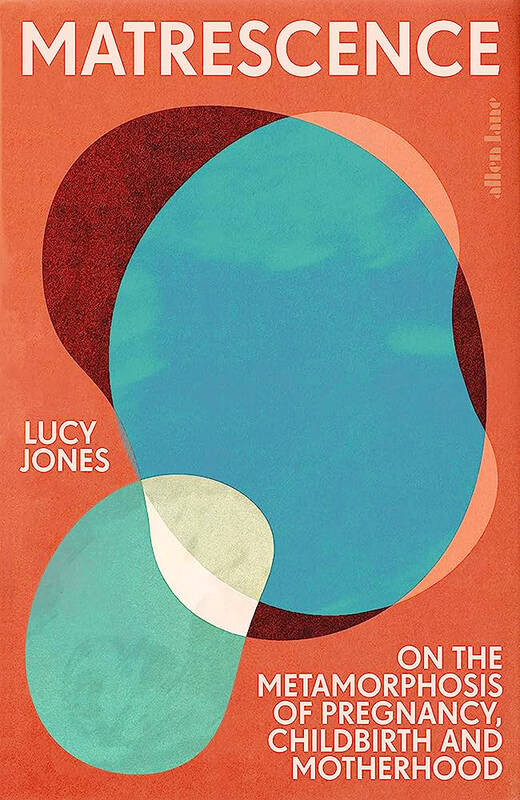Matrescence, the best book I’ve ever read about motherhood, is a delightfully unusual one. For starters, brief passages that lay out the machinations of nature, and many of its horrors, sit around its chapters. We meet eels that endure five life stages and multiple habitats before breeding once and then dying, and black lace-weaver mother spiders who feed their living bodies to their infants.
“Forty spiderlings, which resemble creamy yellow sea pearls, wander over her nonchalantly, devouring, snacking, nibbling, pulling bits of her flesh into their tiny mouths,” Jones writes, watching a grisly nature video. Spotting a similar spider in her children’s toy box not long after, she’s relieved to find no babies. The whole experience has felt “close to home”. “She’s safe,” she writes. “For now.”
By exploring matrescence — the physical, physiological and psychological process of becoming a mother — within this wider context of the natural world, Jones recalibrates ideas of how women are meant to exist and behave during these fast-changing years. The book’s title comes from a 1973 essay by medical anthropologist Dana Raphael, lamenting the lack of acknowledgment of “mother-becoming” in western societies. She discusses a ritual in the Pacific island of Tikopia that marks the fact that a woman has given birth, and prioritizes “the sense of the newborn mother,” rather than erasing her entirely around her child. This shift of focus captivates Jones, a new mother at the start of the book, who has a daughter and two sons by its conclusion.

As in her previous book, 2020’s Losing Eden (an examination of our disconnection from nature), Jones’s writing is hungry to impart knowledge. Moving from the early stages of her pregnancy to her eldest child’s first day at school, she describes how the mother’s brain literally changes shape, retaining extra gray matter for years, processing more information, emotion and memory. She challenges the ideal of the nuclear family raising children in western societies, when babies are raised by networks of “othermothers” across the world, and in the animal kingdom, including in colonies of bats.
Myths are also smashed from page one, which makes this a thrilling read. A sperm doesn’t race to an egg, for example.
“This is a retelling of the hero myth, essentially, with the egg as the passive vessel,” Jones writes, in one of many withering lines.
In fact, cells from the fallopian tube are required to secrete chemicals that allow the sperm to swim and mature, then the egg must enfold it. Women are reframed as active throughout, which empowers.
Jones is great on the impossible rules, and the lack of correct information meted out to pregnant women. (How on earth are they meant to avoid car fumes without staying indoors? Why is morning sickness still called that by the NHS, when studies have proved it’s an all-day rush to the sick bucket for the many who get it?) Passages that reveal what many advocates of “intensive mothering” miss out on are also revealing. The pioneer of attachment theory, John Bowlby, did indeed underline the importance of the proximity of a child to a caregiver in terms of their emotional development, but he also said that parents are equally “dependent on a greater society for economic provision”, and that society should “cherish” its parents. Look at the childcare and parental leave situation in modern Britain and weep.
Especially good is her analysis of the modern obsession with “sacrificing birth”, tracking back to the (amazingly named) British obstetrician Grant Dickly-Read, who saw the vaginal delivery as the “ultimate phenomenon of a series of spiritual experiences”. Jones understands women wanting “to feel their bodies are powerful rather than degenerate, for facing danger and risk head-on”, but this won’t stop her from reminding us how nature is not always kind.
But Jones never wags her finger or chastises. Experimental flourishes in her text — alongside all that beautiful, accessible writing — also add to its majesty. On one page, the phrase “This is how big it needs be” is repeated in a formation that reveals the size of a cervix in its center. How I howled. Matrescence is essential reading, bloody and alive, roaring and ready to change conversations.

There is a Chinese Communist Party (CCP) plot to put millions at the mercy of the CCP using just released AI technology. This isn’t being overly dramatic. The speed at which AI is improving is exponential as AI improves itself, and we are unprepared for this because we have never experienced anything like this before. For example, a few months ago music videos made on home computers began appearing with AI-generated people and scenes in them that were pretty impressive, but the people would sprout extra arms and fingers, food would inexplicably fly off plates into mouths and text on

On the final approach to Lanshan Workstation (嵐山工作站), logging trains crossed one last gully over a dramatic double bridge, taking the left line to enter the locomotive shed or the right line to continue straight through, heading deeper into the Central Mountains. Today, hikers have to scramble down a steep slope into this gully and pass underneath the rails, still hanging eerily in the air even after the bridge’s supports collapsed long ago. It is the final — but not the most dangerous — challenge of a tough two-day hike in. Back when logging was still underway, it was a quick,

From censoring “poisonous books” to banning “poisonous languages,” the Chinese Nationalist Party (KMT) tried hard to stamp out anything that might conflict with its agenda during its almost 40 years of martial law. To mark 228 Peace Memorial Day, which commemorates the anti-government uprising in 1947, which was violently suppressed, I visited two exhibitions detailing censorship in Taiwan: “Silenced Pages” (禁書時代) at the National 228 Memorial Museum and “Mandarin Monopoly?!” (請說國語) at the National Human Rights Museum. In both cases, the authorities framed their targets as “evils that would threaten social mores, national stability and their anti-communist cause, justifying their actions

In the run-up to World War II, Admiral Wilhelm Canaris, head of Abwehr, Nazi Germany’s military intelligence service, began to fear that Hitler would launch a war Germany could not win. Deeply disappointed by the sell-out of the Munich Agreement in 1938, Canaris conducted several clandestine operations that were aimed at getting the UK to wake up, invest in defense and actively support the nations Hitler planned to invade. For example, the “Dutch war scare” of January 1939 saw fake intelligence leaked to the British that suggested that Germany was planning to invade the Netherlands in February and acquire airfields